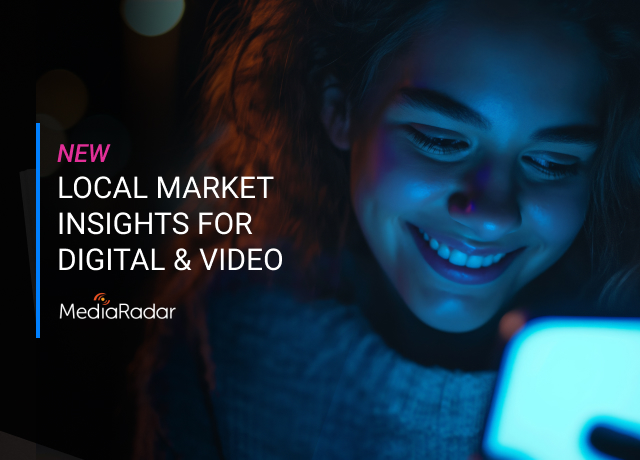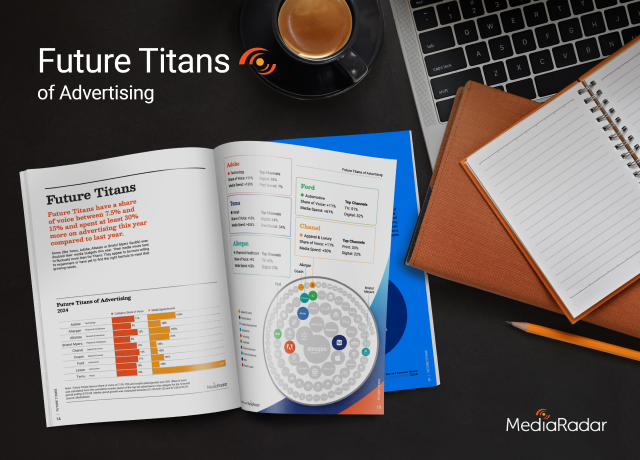As we kick off the new year, we’re covering trends from key markets in 2022. We’ll recap the state of each industry over the past year, the ad strategies of its biggest players, and what we predict 2023 will hold.
The number of prescriptions dispensed in the U.S. has steadily climbed over the past decade, increasing from 3.95b in 2009 to 6.47b in 2021.
For the companies promoting the more than 20,000 prescription drug products approved for marketing in the U.S., consistently earning market share is far from a given. Add to that the remaining uncertainty surrounding the pandemic, a severe flu season, RSV, and ongoing industry shifts, including the advancement of digital healthcare, and pharma companies face an endless uphill battle.
One tool they always use to climb the ranks is advertising.
But with so much change—and more coming—what have ad strategies looked like and how will they take shape in 2023?
MediaRadar Insights on Prescriptions Advertising in 2022
Through November, prescription advertisers, including those from AstraZeneca and AbbVie, spent more than $6.6b on traditional and digital ads; their average monthly investment eclipsed $600mm.
While overall spending far surpasses that of other industries, including gaming, travel, and beauty, it fell by 2% YoY.
Similar to agriculture advertisers, most of these dollars went to traditional formats. The traditional-heavy strategies align with the historical approach of much of the pharma industry but backtrack significantly from the long overdue digital adoption seen during the pandemic.
In fact, when we looked at pharma advertising in October 2020, we found digital ad spend was up by 40%; it was clear that even these traditional-loving advertisers were ready to embrace digital.
But not so fast.
Through November, advertisers spend just 23% of their budgets ($1.5b) on digital media while spending the rest on print (9% or $590mm) and TV (68% or $4.5b).
While spending declined overall, it was mainly due to a decrease of 15% YoY in Q1, which could have resulted from advertisers regrouping following more than two years of justified mayhem.
For many advertisers promoting prescription drugs, their strategies quickly pivoted in early 2020 to address what were then relatively mild concerns about COVID-19.
But with the pandemic making headlines less often, advertisers appear to be getting back to “business as usual.”
In Q2, spending increased by 6% YoY (up by 26% QoQ), while Q3 saw a jump of 9% YoY, albeit at a level 11% lower than the prior quarter.
Top Prescription Advertisers in 2022
Despite the industry’s size, most spending came from advertisers promoting prescription drugs in five categories: diabetes, psoriasis, arthritis, migraine, and HIV/AIDS.
Collectively, these advertisers spent more than $2.5b or 38% of the investment from prescription drug advertisers through November.
Diabetes
Advertisers for diabetes prescriptions spent more than $610mm through November. Although that makes them the highest-spending category this year (and in 2021), their spending slipped by 24% YoY.
That said, much of that decrease resulted from a sizable reduction (by 26%) from advertisers at Nordisk (Ozempic and Rybelsus).
Advertisers for Eli Lilly and Company followed suit, decreasing spend by 65% YoY as they pumped the brakes on campaigns to promote Trulicity.
While advertisers for Nordisk saw their budgets slashed, a recent FDA approval and label expansion for its diabetes pill, Rybelsus, could give them reason to spend as they go toe-to-toe with Merck & Co. and Eli Lilly and Company in the new arena. (The FDA approved Rybelsus as an initial treatment to lower blood sugar levels.)
Nordisk’s emergence should also force the hands of advertisers at Merck & Co. and Eli Lilly and Company, who will also find themselves swimming in a sea with one more fish.
But not all advertisers promoting diabetes prescriptions saw their budgets cut in 2022.
Advertisers for AstraZeneca (Farxiga) and Boehringer Ingelheim (Jardiance), who, combined with Nordisk, accounted for 88% of ad spending on diabetes prescriptions, increased spending.
Advertisers for AstraZeneca, for example, boosted their investment by 139% YoY as sales of Farxiga surged by almost 50% in the first nine months of the year. These advertisers placed nearly $28mm in digital media, with 60% done so programmatically.
Meanwhile, advertisers for Boehringer Ingelheim increased spending by 13% YoY, which will likely continue as it tries to keep pace with AstraZeneca.
The increased market competition won’t be the only forcing factor in 2023. Spending will continue to climb as diabetes rates surge among young people and researchers explore the condition’s possible link to COVID-19.
Psoriasis
Advertisers promoting psoriasis prescriptions, including those from AbbVie, Amgen, and Johnson & Johnson, who accounted for 81% of the category’s spend, saw their budgets drop by 23% YoY to $549mm.
AbbVie, for example, spent 17% less YoY to promote Styrizi, while Amgen lowered spending on Otezla and Enbrel by 30%.
The decrease in spending from AbbVie comes despite strong performance, especially from Skyrizi, which exceeded sales estimates by more than $30mm.
This drug-specific growth comes at a particularly vital time for AbbVie as leaders and advertisers face a first: “biosimilars” of Humira. As patent protection ends for its widely popular rheumatoid arthritis drug, ad spend will undoubtedly flow to other medications to compensate for lost revenue.
Advertisers for Johnson & Johnson could also find themselves spending more.
While advertisers reduced spending by 4% YoY, the launch of Stelara deserved ad dollars, most of which went to TV (81% of the investment in Stelara) and its “UnstoppaBOLD” campaign in early 2022.
Arthritis
Advertisers for arthritis prescriptions decreased spending by 4% YoY to $548mm. That said, spending in November increased by 28% MoM from October.
AbbVie, Endo International, and Pfizer spent almost all of these ad dollars (95% or $518mm).
While spending was down overall, we can attribute much of that to Pfizer’s 69% YoY decrease, which could point to the company’s continued investment in COVID-related campaigns and where its ad dollars may go this year.
At the same time, advertisers for AbbVie and Endo International increased spending by 28% and 227% YoY, respectively.
AbbVie will likely continue to spend on the heels of its sixth FDA approval for its arthritis medicine, RINVOQ.
Migraine
Across-the-board decreases in spending from prescription drug advertisers didn’t stop those promoting migraine medicines from upping their investments.
Through November, spending from these advertisers increased by 11% YoY to nearly $430mm. (Spending did drop by 40% MoM in November.)
The two drivers of migraine prescription advertising were AbbVie and Biohaven, the latter of which was acquired by Pfizer in late 2022 to help the industry giant “strengthen its Internal Medicine pipeline.”
Spending from AbbVie increased by 27% YoY, with around 79% of the ad dollars dedicated to Qulipta going to 16-30 second video ads.
At the same time, advertisers for Nurtec ODT (Biohaven) increased spending by 41% YoY despite a 26% MoM reduction in November.
Pfizer’s late-year acquisition of the company will undoubtedly impact its ad strategy in 2023. For example, with Pfizer continuing to invest in COVID-19-related initiatives, the spotlight on Nurtec ODT may dim.
HIV/AIDS
Advertisers for HIV/AIDS prescription drugs spent $389mm through November, representing a 3% YoY decrease from 2021. That said, November’s investment represented a 20% MoM increase from October.
The two companies driving this spending were Gilead Sciences and GlaxoSmithKline (GSK), which accounted for nearly 100% of the category’s investment.
A level deeper, advertisers for Gilead Sciences decreased spending by 45% YoY. Spending continued to fall in November, dropping by 10% MoM. Still, it could rebound quickly following FDA approval of Sunlenca, the twice-yearly treatment option for people living with multi-drug resistant HIV.
Meanwhile, advertisers for GSK increased spending to promote Dovato by 54% YoY, which will almost certainly rise in 2023.
In November, the company voluntarily withdrew Juluca, its first-ever two-drug regimen of HIV treatment, three years and nine months after it won its permit in Korea.
While the announcement came from outside the U.S. market, it noted that the “voluntary withdrawal seems to reflect GSK’s decision to concentrate more on the other two-drug HIV treatment, Dovato,” which could influence spending stateside.
One Step Forward, Two Steps Back
After decades of an uncompromising commitment to traditional ad formats, the pandemic and acceleration of digital health were the forces that finally convinced advertisers to embrace digital—or so we thought.
Based on their strategies in 2022, that’s not the case.
Despite the industry’s adoption of all things digital, advertisers seem to be reverting to their old ways. With the continued rise of their bottom lines, it’s hard to blame them.
While they’ll likely maintain their against-the-grain approaches in 2023, significant ad dollars will almost certainly follow—and if it’s not to promote prescription drugs, it’ll be to shine a light on other products. Advertisers for these companies are too big and under too much pressure to let their budgets dry up.
For more insights, sign up for MediaRadar’s blog here.



